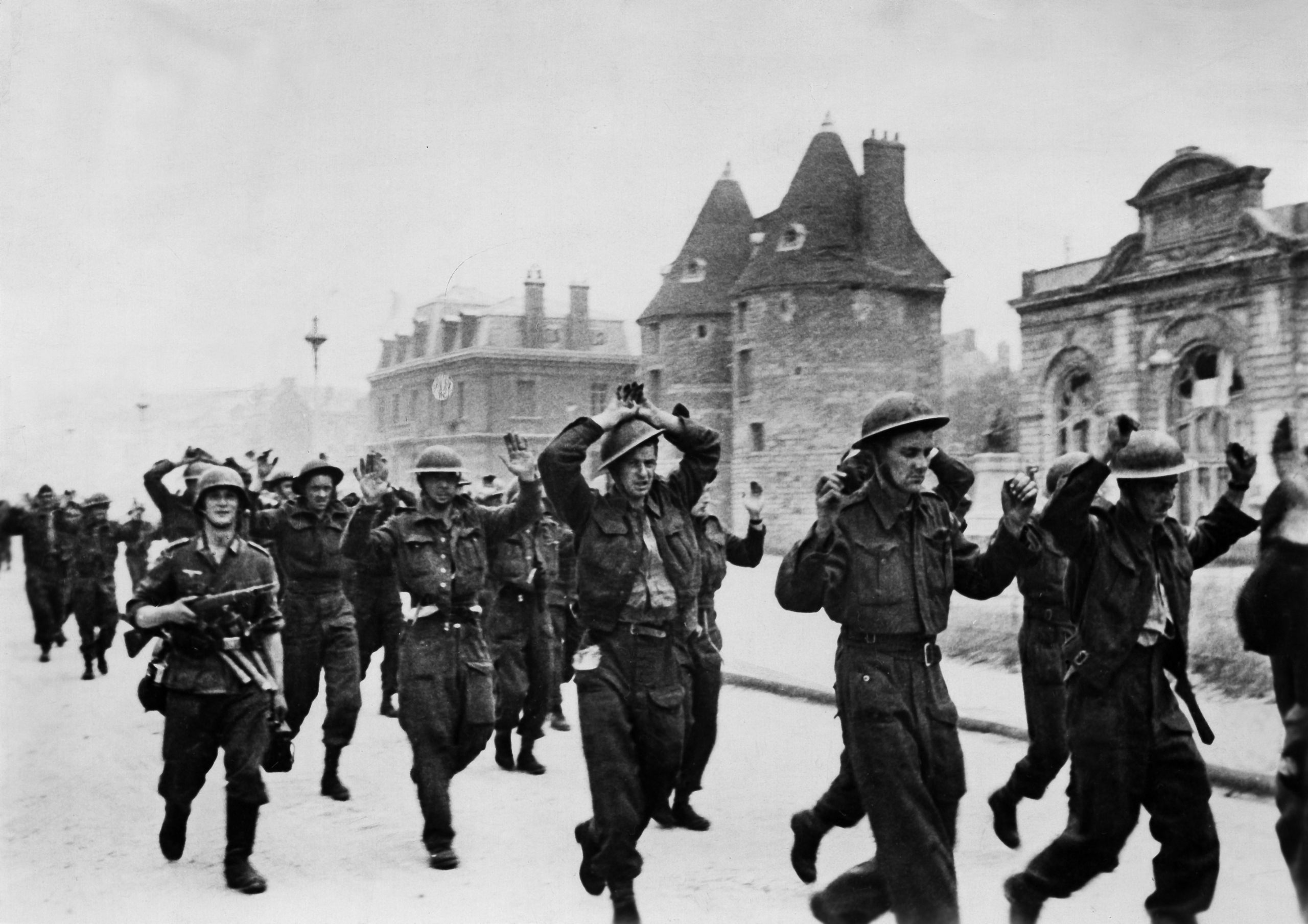Battle of Dieppe, as “Operation Rutter”, later – “Operation Jubilee” – armed forces of the United Kingdom and Canada on the French coast of the English Channel and the attack on the occupied German port of Dieppe on northern France in 1942… The purpose of the operation, according to the official version, was to seize and hold the port of Dieppe for a time sufficient to collect information from prisoners of war and assess the German reaction, as well as destroy coastal defenses, port buildings and other objects.
The operation involved about 6,000 infantrymen, mostly Canadians, with the support of the British naval contingent and the air force.
The landing began on August 19, 1942 at 5 o’clock in the morning, and by 9 o’clock the Allied command was forced to give the order to retreat. The operation ended with a swift and crushing defeat for the allies. Of the 6,086 paratroopers who landed, 3,623 were killed, wounded or captured (only about 60%). Allied air forces failed in battle with German air forces and lost 106 aircraft; the German air force, according to the Germans, lost 48 aircraft.
The failure of the Dieppe operation influenced the preparation of the Allies for Operation Torch and Operation Overlord.

Background
After the evacuation from Dunkirk in 1940, the British began to develop offensive operations. This work included the development of technology and equipment for amphibious assault and cover from the sea. At the end of 1941, it was proposed to land 12 divisions in the Le Havre area, which would somewhat weaken the German onslaught in the East. After the US entered the war, the US Chiefs of Staff, on a wave of optimism fueled by the mood of the US political leadership, began to develop plans to open a front for hostilities in Europe, despite British skepticism. In particular, the plans were proposed “Roundup” and “Hammer”. The first involved a full-scale landing of 48 divisions no later than April 1943, the second – the capture of one of the major ports (Brest or Cherbourg) in the fall of 1942 with the subsequent accumulation of troops on the bridgehead and a breakthrough deep into France in the spring of 1943. Later, Operation Rutter was presented as a means of studying the problems that arise when seizing a seaport using landing equipment.
Attack

Start of Landing
The landing was carried out in four zones along the coast, designated from east to west as Blue, Red, White and Green. The Royal Canadian Regiment Landed in the Blue Zone. The main forces are planted in red and white zones consisted of the Royal Hamiltonian Regiment Light Infantry, Essex Scottish Regiment, Shelf Le Fyuzile Mont-Royal, A battalion of the Royal Marine Commandos And 14th 1st Canadian Tank Regiment. South Saskatchewan Regiment and Her Majesty’s Own Cameron Mountain of Canada landed in the Green Zone.
The Allied fleet consisted of 8 destroyers, gunboats escorting landing craft and boats. He left the south coast of England on the night of 18 August. The minesweepers had previously cleared the passage in the English Channel.
The landing began on August 19 at 4:50 am with an attack on two artillery batteries located on the flanks of the main landing zone. Simultaneously, an attack began on Varengeville by the 4th Commando Battalion, Purville by the South Saskatchewan Regiment and the Royal Personal Regiment of the Cameron Highlanders of Canada, Puah by the Royal Canadian Regiment and Berneval by the 3rd Commando Battalion.
The attackers assumed that the German coastal units were not expecting an attack, but it was later reported that the alarm was raised in Pua and Berneval at 03:48 am due to a firefight that began within coastal visibility when, while moving in the direction of Puy and Berneval landing ships and an escort unexpectedly met a German convoy on the way and had to engage in battle with it. The element of surprise was lost.


At Bernevalle, only a small part of the 3rd Commando Battalion was able to land and briefly disable the battery, forcing the gunners into the bunkers with sniper fire. In Pua, the landing was delayed: the troops, suffering heavy losses from machine-gun fire, got stuck on the coastal strip. The fourth commando battalion, without encountering resistance, became the only unit that completed its task – the capture of the coastal battery of Varengeville. In Poirville, the Canadians landed, also without encountering serious resistance, but not at the intended place. As a result, they were late with the start of the assault on the city. The second Canadian battalion landed at the same location 30 minutes later. He began to advance inland, but was soon pushed back by the enemy troops that arrived in time.
At 05:20, the main assault on Dieppe began by units of two Canadian regiments, which were supported by tanks. The landing took place under the cover of a smoke screen supplied by British aviation.
The infantry landed on time, but weak support fire showed the Germans that the tanks were late with the landing. The first wave of the assault was repulsed. Only a small number of infantry and six tanks reached the city, but they were stopped by debris on the roads and units of tank destroyers that arrived in time – artillerymen from the German 10th Panzer Division. Tanks ” Churchill ” were in a hopeless position: they were stuck in the narrow streets of the city and, deprived of the support of the infantry, were met with strong anti-tank fire. As a result, the tanks that broke through were destroyed or abandoned by their crews. The main part of the tanks did not overcome the fortifications of the coastal strip and were destroyed by coastal artillery fire and strikes by dive bombers.
General Roberts gave the order to retreat, and the last members of the landing, and not having time to land, turned back. The general retreat began at 11:00 and continued under heavy enemy fire until 14:00.
During the entire operation over the landing zone, air battles were fought with the participation of 945 aircraft from both sides. The losses of the British amounted to 106 aircraft (555 pilots killed and wounded). The Luftwaffe, as it turned out, lost only 48 aircraft.


Effects
Of the 4,963 Canadian infantry, 3,367 were killed or captured. British commandos lost 275 men. The British fleet lost one destroyer, 33 landing barges and 550 men.
The Germans lost, as it turned out later, only 561 people killed and wounded.
Some Western historians regard this operation as a prologue to the Overlord.
The surviving participants in the operation were involved in the preparation of subsequent Allied amphibious assault forces.










